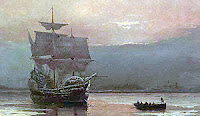It’s
time to relax, have a little fun, and get ready for the holidays. For the next three weeks, we’ll take a
look at what you can do with the other parts of that bottle of wine. Today, let’s start at the top with the cork.
If
you recycle your corks, you are a true Eco-Wine Lover. Kudos to you, and please disregard
this. But, if you seem to end up
with a drawer full of them, here’s a few holiday ideas to help eliminate the
cork clutter and, maybe, get a few gift ideas out of the way for the wine
lovers on your list.
 First,
decide what you’d like to create.
Options include a wine cork wreath, cork bulletin board or trivet, cork
wine tree, and cork bottle tags. Next, gather your corks and a hot glue
gun. Now, pour a
glass of your favorite wine and follow the instructions from the options
below.
First,
decide what you’d like to create.
Options include a wine cork wreath, cork bulletin board or trivet, cork
wine tree, and cork bottle tags. Next, gather your corks and a hot glue
gun. Now, pour a
glass of your favorite wine and follow the instructions from the options
below.
Wine
Cork Wreath –
 Start
with a wreath form from your local craft store. Attach the corks with the hot glue gun. Place them in a random fashion, covering the wreath. When
you’re finished, attach a holiday bow and hang.
Start
with a wreath form from your local craft store. Attach the corks with the hot glue gun. Place them in a random fashion, covering the wreath. When
you’re finished, attach a holiday bow and hang.
Wine
Cork Bulletin Board or Trivet –
 Begin
by gluing the corks together. You can glue them in a parquet pattern of two up
and two down, or all in a straight line, end-to-end and side-to-side. The size of the bulletin board or
trivet depends on how many corks you have.
Begin
by gluing the corks together. You can glue them in a parquet pattern of two up
and two down, or all in a straight line, end-to-end and side-to-side. The size of the bulletin board or
trivet depends on how many corks you have. For
a trivet, instead of gluing the corks together lying side by side, you could
cut them in half and glue them standing up, leaving some space between them to
create a fancier pattern. If you
use this method, you can even create some matching wine coasters.
For
a trivet, instead of gluing the corks together lying side by side, you could
cut them in half and glue them standing up, leaving some space between them to
create a fancier pattern. If you
use this method, you can even create some matching wine coasters. Once
glued in a pattern, glue the corks to a board that will provide a sturdy
backing for them. If you’re
creating a bulletin board, you might want to put a frame around the corks. If you’ve crafted a trivet, you could
consider small plastic feet so the wood does not scratch the counter surface it
sets on.
Once
glued in a pattern, glue the corks to a board that will provide a sturdy
backing for them. If you’re
creating a bulletin board, you might want to put a frame around the corks. If you’ve crafted a trivet, you could
consider small plastic feet so the wood does not scratch the counter surface it
sets on.
Wine
Cork Tree –
Arrange
various corks in the shape of a Christmas tree and glue together. Check the ends of the corks – many red
wines will have already provided a nice coloring to them. Others, you may wish to give a light
coating of green food coloring to. Glue two corks together to attach to the
bottom as a trunk, or cut the top off a champagne cork and use the thick part
as the trunk and the round part for the top of the tree. Attach a festive ribbon to complete your
wine cork tree.
Cork
Wine Bottle Tags -
 Purchase
sheets of cork from your local craft store. Use a paper wine bottle tag or bottle necker as a guide and trace onto the sheet of cork. Cut the tag shape out carefully and attach
a ribbon to the top. If this is a gift, include a
sharpie pen for writing on the bottle tag – and a bottle of wine to get them
started.
Purchase
sheets of cork from your local craft store. Use a paper wine bottle tag or bottle necker as a guide and trace onto the sheet of cork. Cut the tag shape out carefully and attach
a ribbon to the top. If this is a gift, include a
sharpie pen for writing on the bottle tag – and a bottle of wine to get them
started.
Once
you’ve finished, sit back and enjoy a glass of wine as you ponder how you ended
up with that many wine corks
anyway… ; D
Enjoy!
~
Joy


















































